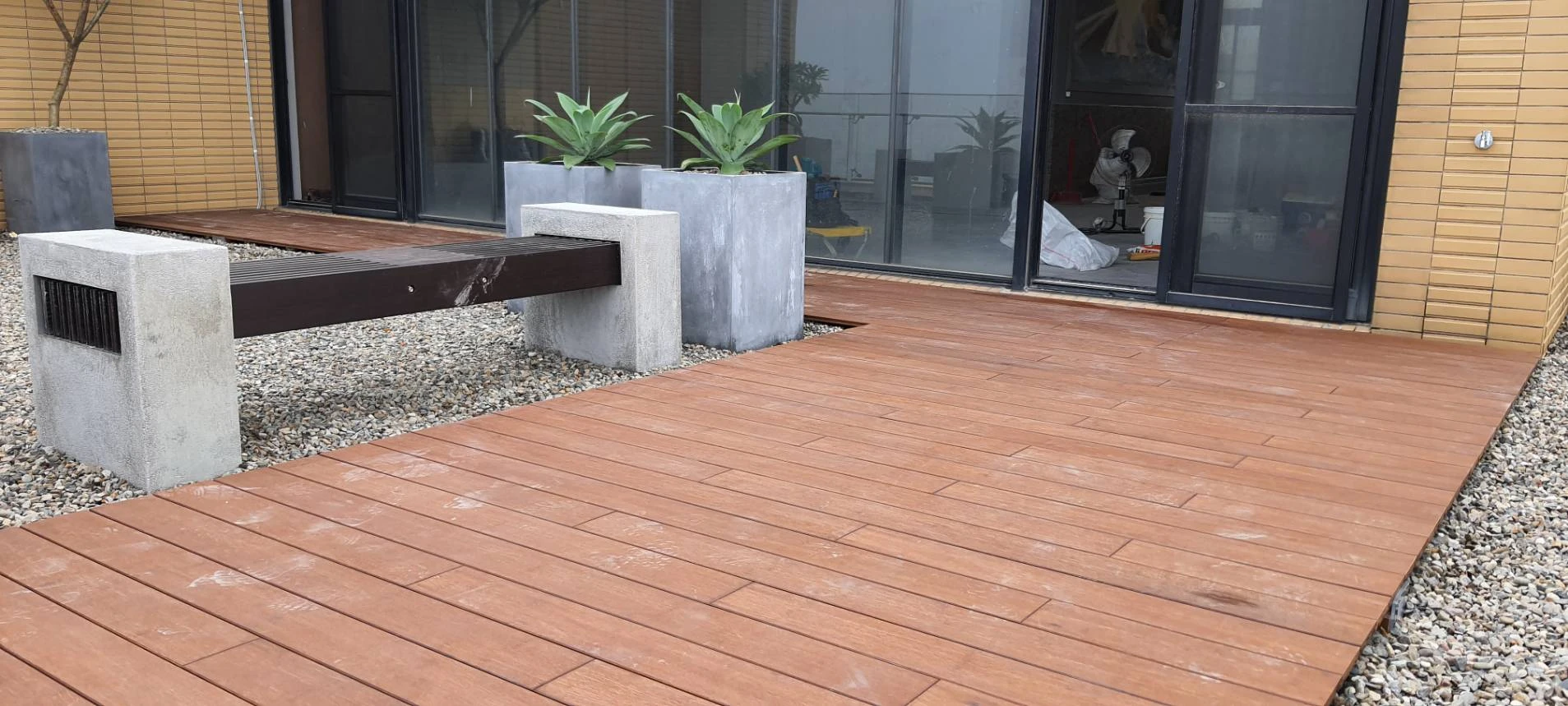Bamboo decking is gaining serious attention as a reliable, eco-friendly alternative to tropical hardwoods like mahogany and ipe. But not all bamboo decking is created equal. If you're looking for a product that can handle harsh outdoor conditions for over 15 years, you need to understand how bamboo is processed, what makes it durable, and what to look for in a high-performance board.
As a technologist working in a bamboo decking factory, I’ve seen firsthand what goes into producing long-lasting, high-density bamboo decking. Here’s what you need to know.
Bamboo Harvesting: Fast-Growing and Sustainable
Bamboo used in decking—typically Moso bamboo (Phyllostachys edulis)—is one of the fastest growing plants on Earth. It reaches full maturity in just 5 to 6 years, compared to 30+ years for tropical hardwoods. This rapid growth makes it an incredibly sustainable option.
Harvesting is done only after the bamboo has fully matured. This ensures the fibers are dense, hard, and suitable for outdoor use. Immature bamboo has a higher sugar and starch content, which makes it more vulnerable to insects and decay. Mature Moso bamboo, on the other hand, has a natural resilience that makes it ideal for long-term applications like decking.
Strand Woven Bamboo: The Process Behind the Strength
What sets premium bamboo decking apart is the strand woven manufacturing process. After harvesting, the bamboo is split, shredded into fibers, and then combined with adhesives—typically low-emission resins like MDI (methylene diphenyl diisocyanate). These fibers are then cold-pressed and cured under extreme heat and pressure.
The result is a product with twice the density of oak. Strand woven bamboo decking has an average density of 1,100–1,200 kg/m³, making it one of the densest materials used in outdoor construction.
This ultra-high density gives the decking incredible resistance to:
- Impact and wear
- Insects and termites
- Rot and decay
- Mold and mildew
Mold Resistance: How Bamboo Outperforms Mahogany
One of the most overlooked advantages of strand woven bamboo is its natural resistance to mold and mildew—particularly when compared to hardwoods like mahogany.
Even though mahogany is known for its natural oils, it’s still a porous material and can absorb moisture if not sealed properly. Over time, this can lead to mold growth, especially in humid or shaded environments.
Strand woven bamboo, due to its compressed fiber structure and low porosity, does not absorb water easily. Combined with factory-applied treatments and finishes, it becomes even more resistant to biological attacks. In real-world tests, it has consistently outperformed mahogany in high-moisture environments.
Weather Resistance: Built for Outdoor Life
Whether you’re installing bamboo decking in a tropical climate, a coastal environment, or a region with freezing winters, strand woven bamboo can handle it.
The high-density structure resists swelling, shrinking, and cracking due to temperature and humidity changes. In addition, many manufacturers apply thermal treatments and UV-resistant coatings during production to enhance weather tolerance.
Look for boards that are:
- Thermally treated to improve dimensional stability
- Factory-sealed with UV and water-resistant coatings
- End-matched or tongue-and-groove to reduce moisture ingress
With proper installation and basic maintenance, bamboo decking can remain structurally sound and visually appealing for 15 years or more.
Warranty and Lifespan: What to Expect
Top-tier bamboo decking products come with warranties ranging from 10 to 25 years, depending on the brand and treatment. A 15-year warranty is a strong indicator that the manufacturer is confident in the product’s outdoor performance.
The actual lifespan can exceed the warranty period, especially if:
- The decking is installed with proper ventilation underneath
- The boards are re-oiled or refinished every few years
- Debris is regularly cleared to prevent moisture buildup
Unlike softwoods that may rot or splinter within a decade, strand woven bamboo retains its structural integrity for much longer.
What to Look for When Choosing Bamboo Decking
Not all bamboo decking is made the same. Here’s a checklist to help you choose a product that stands the test of time:
- ✅ Mature Moso bamboo harvested at 5–6 years
- ✅ Strand woven construction for maximum density
- ✅ Low-emission adhesives like MDI (formaldehyde-free)
- ✅ Thermal treatment for added dimensional stability
- ✅ UV- and water-resistant coatings
- ✅ Third-party certifications (e.g., FSC, EPD, LEED credits)
- ✅ 15-year or longer warranty
- ✅ Proven resistance to mold, mildew, and insects
Final Thoughts
Strand woven bamboo decking is not only a sustainable alternative to hardwoods—it’s also a high-performance material built for the long haul. With extreme density, natural resistance to mold and decay, and engineered weather resistance, it delivers both beauty and durability in outdoor spaces.
When manufactured and installed correctly, bamboo decking can easily last 15 years or more—offering peace of mind and a smaller environmental footprint. Choose the right product, insist on quality, and enjoy a deck that performs season after season.



